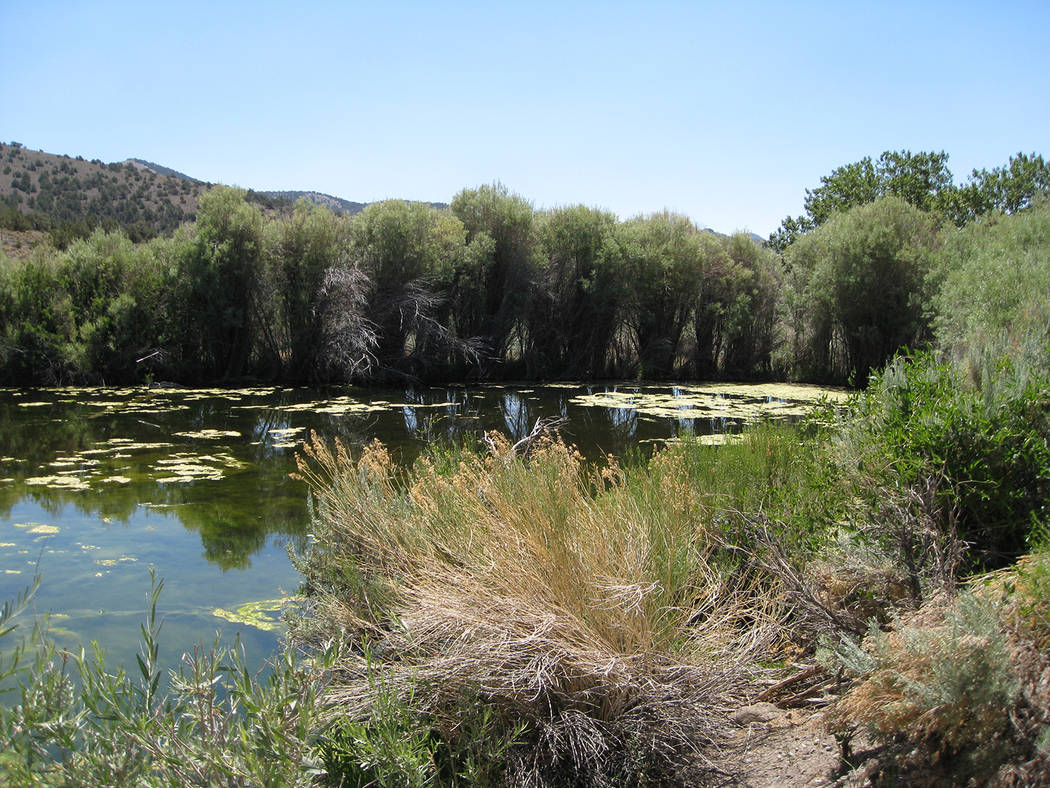Where earth meets water: the wonder of Nevada wetlands
Water in the desert is something of a gem, providing an oasis in an otherwise dry landscape and giving rise to a huge variety of life forms that can sometimes seem incongruous with their stark surroundings.
Nevada’s wetlands are a wonder of nature and their beauty and importance deserve to be celebrated, which is exactly why the Nevada Natural Heritage Program and Department of Conservation and Natural Resources are teaming up to spread the word about American Wetlands Month. Throughout the month of May, the program will be undertaking an educational endeavor to inform the public about the importance of wetlands to Nevada’s ecological, economic and social health.
“Wetlands are the link between land and water – where the flow of water, the cycling of nutrients and the energy of the sun meet to create highly productive ecosystems with unique plant and animal life,” a new release read. “In broad terms, wetlands refer to all wet areas that provide ecosystem services and habitat for plants, wildlife, and aquatic species, including wet meadows, seeps and springs, playas, riparian areas, perennial streams, and intermittent/ephemeral washes.”
Nye County and its neighbor Esmeralda County are both areas to explore when searching out the amazing environment created by wetlands.
Nevada Department of Conservation and Natural Resources Public Information Officer Samantha Thompson told the Pahrump Valley Times Nye County supports many rivers, streams and springs throughout and these are imperative in terms of supporting the species that are found only in this county. Examples of Nye County wetlands include the Reese River in the west, White River Valley to the east and Ash Meadows in the south, Thompson stated.
She also provided a list of the endemic, wetland-dependent species that can be found in Nye County, which include a variety of fish, insects, mollusks, dicots, monocots and even one mammal. The list of 54 endemic species includes the well-known Devil’s Hole pupfish and Ash Meadows pupfish, the Amargosa toad, the Ash Meadows montane vole, the spring-loving centaury plant and the Ash Meadow’s lady tresses plant, among many others.
The list of endemic species that can be found in Esmeralda County is a bit trickier to put together, Thompson said, noting that she had discovered only two in the course of her research. “One is a springsnail that is considered extinct and the other is a fish that hasn’t been surveyed since 2007,” Thompson explained.
However, Esmeralda County does have its share of wetlands, too, with Thompson informing, “Areas of Fish Lake Valley, creeks that drain out of the White Mountains such as Trail Canyon, Chiatovich Creek and others, and springs in the Silver Peak Range are examples of areas in Esmeralda County that support wetlands.”
The news release reported that wetlands, often referred to as the “kidneys” of a watershed, are renowned for their ability to remove toxic substances, excess nutrients and harmful pollutants from the water.
“Although wetlands cover a relatively small amount of land in Nevada, the benefits of these biological powerhouses, including improved water quality, increased water storage/supply, reduced flood and storm surge risk, and essential habitat for plants and wildlife, are indispensable to the state,” the release stated.
“More than 300 native animal species, such as the Bald Eagle and northern river otter, and over 50 native plant species are dependent upon Nevada’s wetland habitats. Additionally, approximately two-thirds of Nevada species listed as state or federally threatened or endangered live exclusively in wetlands, while dozens more wetland-dependent species are considered sensitive or rare.”
The campaign to raise awareness of the importance of wetlands is not simply to draw attention to the beauty of these areas, it also serves the purpose of inspiring a desire to preserve and protect these areas. According to the release, Nevada, already the driest state in the nation, is estimated to have lost 52% of its historic wetland acreage.
“The remaining wetlands continue to be threatened by numerous factors, such as water diversion and development. The Nevada Natural Heritage Program continues to work closely with its partners to develop and promote innovative solutions to monitor, assess, and preserve our natural wetland environments,” the release stated.
“Wetlands serve as a lifeline to many of Nevada’s diverse species, and the Nevada Natural Heritage Program, in collaboration with our partners, is excited to further coordinate efforts in support of these important resources,” Nevada Natural Heritage Program Administrator Kristin Szabo said. “Together, we strive to foster the health and well-being of our precious wetland resources, today and for generations to come.”
For more information visit www.heritage.nv.gov
Contact reporter Robin Hebrock at rhebrock@pvtimes.com





















